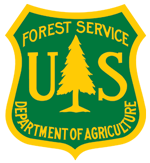Rising water temperature (Tw) due to anthropogenic climate change may have serious conse- quences for river ecosystems. Conservation and/or expansion of riparian shade could counter warming and buy time for ecosystems to adapt. However, sensitivity of river reaches to direct solar radiation is highly het- erogeneous in space and time, so benefits of shading are also expected to be site specific. We use a network of high-resolution temperature measurements from two upland rivers in the UK, in conjunction with topo- graphic shade modeling, to assess the relative significance of landscape and riparian shade to the thermal behavior of river reaches. Trees occupy 7% of the study catchments (comparable with the UK national aver- age) yet shade covers 52% of the area and is concentrated along river corridors. Riparian shade is most ben- eficial for managing Tw at distances 5–20 km downstream from the source of the rivers where discharge is modest, flow is dominated by near-surface hydrological pathways, there is a wide floodplain with little land- scape shade, and where cumulative solar exposure times are sufficient to affect Tw. For the rivers studied, we find that approximately 0.5 km of complete shade is necessary to off-set Tw by 18C during July (the month with peak Tw) at a headwater site; whereas 1.1 km of shade is required 25 km downstream. Further research is needed to assess the integrated effect of future changes in air temperature, sunshine duration, direct solar radiation, and downward diffuse radiation on Tw to help tree planting schemes achieve
Located in
Resources
/
Climate Science Documents























